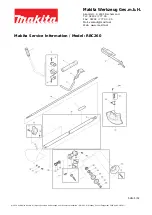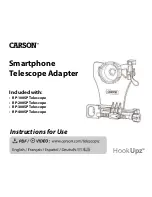
PN# 500-18000
Page 2
Rev. D, 10/11
unit is simply centrally positioned above the door with the pattern covering the door (setting the
pattern is addressed later in this manual).
For security applications, you will set your position to defend against someone activating the
detector from the outside. This can be done by inserting a heated object under the door. To
deal with this threat, the unit is positioned above and outside of the door hinges with the pattern
adjusted so that it sweeps across the door but does not detect the bottom of the door. If the
door includes an exit bar, the pattern must be broad as a person’s approach to the door is
variable. If it includes a door knob or lever handle, the pattern can be adjusted more
narrowly.. A final option for security applications is to position the unit at the side of the door
so that it sees across the door. This can be used for doors at the end of corridors. You would
not want to employ this approach for non corridor doors as the door would be released by
someone walking near it (maximum detection range is 20-25 ft.) Side of door mounting has the
disadvantage of greater exposure to vandalism but defends against objects being inserted under
the door and provides excellent coverage along the full width of the door. Note that for the end-
of-corridor application, the unit can be positioned on the same wall plane as the door or on a
wall which is next to the door and perpendicular to it. You have the choice because the pattern
can be adjusted a full 90 degrees with respect to the sensor’s mounting plane.
2.2 FIXING THE UNIT TO THE WALL
First, locate the screw on the end of the unit and loosen it. This permits you to remove the
cover. The appearance of the interior is shown in Figure 2. Note that the interior electronics is
mounted on a rotating barrel which is locked by the “Barrel Locking Screw” shown in Figure 2.
Loosen this screw and rotate the barrel fully upward so that you can remove it. This leaves you
with the back piece and you will see two slotted holes for physical mounting and a choice of two
wire entry points (also shown on Figure 2). Most installers prefer to pull the cable through the
wall first and then mount the unit. If you’re not sure of your wire count for the cable, consult
the next section at this time but completion of physical installation consists only of screwing the
back piece to the wall and pulling the cable through one of the wire entries. Then you will
replace the barrel assembly and attach the wires to the screw terminals.
FIG. 2: XMS OVERVIEW
IC
A B
LED FAST
IN+ DEVICE
C1 NC1 NO1
BARREL LOCKING
SCREW
+
-
12-28 VDC
POWER
LOCK CONTROL
REX RELAY
WIRE
ENTRY
HOLES
AIMING
SCREWS
SENSITIVITY
JUMPER
LED LOGIC
JUMPER
TIME SET
JUMPER
BI-COLOR
LED
3. WIRING
3.1 INPUT POWER
To power the unit, filtered and regulated DC voltage between 12 and 28 volts should be applied
to the power input terminals (see Figure 2). This connection should be permanently made to
the power supply rather than switched through some other device. The XMS should receive
constant power. Make sure you observe correct polarity with this connection. If you reverse
the input power polarity, the unit will not be damaged but will appear to be dead. Power
consumption for the XMS is approximately 20 mA.
3.2 WIRING WITH MAGNETIC LOCK ONLY
This is the simplest application which releases the magnetic lock from the inside for free egress
but is not concerned with shunting any alarm point at the door. It is shown in Figure 3.
INPUT


























